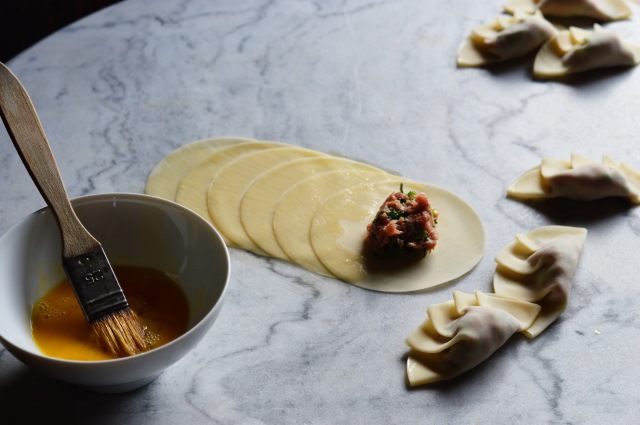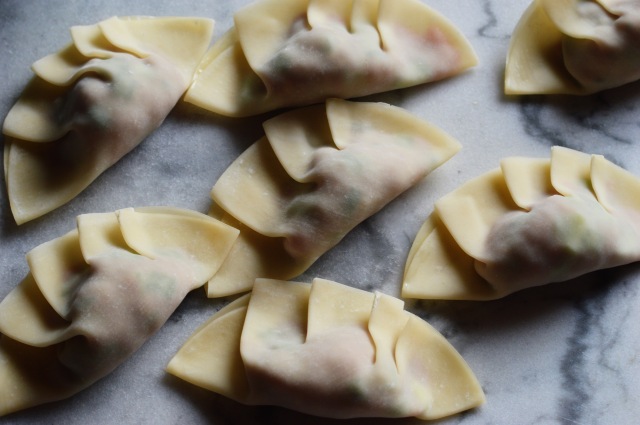
One of my life regrets is that I never learned how to speak Korean, especially knowing that I could truly have been bilingual having grown up in America and in a Korean immigrant family. Only speaking one language has even felt more like a handicap now that I live in Europe. For example, I work in an office of about 100 people and I among the other 7 Americans and Brits are probably the only ones who don’t speak a second or third language fluently. Embarrassing? Yes.
I do however feel proud that I can cook Korean food. When I was growing up, I always hung out in the kitchen with my mom as a way to get out of practicing the violin or piano (I know, super Korean). I would always ask to help season soups, peel garlic, assemble mandu (Korean dumplings) or even take the stems off bushels of soy bean sprouts. Looking back now, I am very thankful to have spent so much time with my mom in the kitchen because cooking Korean food has become something natural to me and of course I get to enjoy a meal that’s absolutely delicious and always brings me back home.
I know it’s already 5 days past New Year’s Day, but I had to make this because I’ve been eating this soup almost every start of the new year since I was born. And to be honest, I didn’t make this on the 1st because frankly, it’s a lot of work and was not in any condition to be working in the kitchen most of the day, but I tell you it’s worth it! And of course, this soup can be enjoyed anytime of the year, but it is most traditionally served on New Year’s Day in Korea to honor becoming a year older. I hope you enjoy this recipe and share it with your loved ones!
Oh and I just realized as I was writing this blog post that I forgot the roasted seaweed as a garnish, but it’s still delicious without it!









INGREDIENTS (approx. 6-8 servings)
For Soup Stock:
1.5-2 pounds of various beef bones (I used 8 marrow bones and 2 ankle bones)
2 pounds of flank steak or beef brisket or any type good for soup and slow cooking (I used the cut around the marrow bones)
12 cups of water
4 large garlic cloves minced
salt to taste
black pepper to taste
1 pound sliced Korean rice cakes (duk)
For the Mandu (Korean Dumplings): makes approx. 60 dumplings but you only need about 24 for this recipe
1.5 pounds ground pork (lean, good quality)
1 large cup chopped Chinese chives (or green onions)
3 tbsp soy sauce
2 tbsp Shaoxing wine (optional or can be replaced with 1 tbsp Mirin)
2 tsp sesame oil
1/2 tsp salt
3 large cloves garlic minced
small pinch of sugar
1 beaten egg (optional, I didn’t use one as my meat was sticking quite well together)
1 beaten egg for gyoza wrappers
60 gyoza wrappers (I like to use the circle ones, but square ones are fine too)
Note: Only 24 dumplings are required for this recipe, but the remaining ones can be served as an appetizer or can be stored in the freezer for future use.
Garnish:
3 eggs plus a pinch of salt and pepper to make an omelette for sliced egg strips
2 green onions thinly sliced
roasted seaweed sliced (not pictured in photo)
freshly cracked black pepper
INSTRUCTIONS
- Place bones and beef in a large pot and add water (until the bones and meat are fully covered). Bring this to a boil for a few minutes and then strain the meat and bones. Wash and remove any visible fat. Place the meat and bones back in the pot and fill with hot water covering everything again and bring to a boil.
- Once the stock has come to a boil, place on low heat to allow it to simmer. Skim fat and other excess off the top as you see fit and simmer for at least 4 hours.
- While your stock is simmering, assemble the mandu. In a large bowl, mix ground pork, chives, soy sauce, Shaoxing wine, sesame oil, salt, garlic, sugar and egg if you choose. Mix until all ingredients are well incorporated.
- Place gyoza wrappers onto a flat surface and brush one side with egg wash. I like to work with 6-7 at a time so the dough does not dry out. Place a damp towel over remaining wrappers to avoid drying out.
- Scoop approx. 1 tbsp of meat filling onto a wrapper and fold one side to the other to close and seal the mandu. I like to close them in a fan design, but choose any method you are comfortable with. Make sure not to use too much egg wash or it will be difficult to close.
- If you are not steaming the dumplings immediately, store mandu on a flat plate with a damp cloth on the top.
- If you are going to cook and steam your mandu at the same time you are assembling, like I do, then get a steamer ready. I use a large pot with a metal steamer basket lined with a coffee filter.
- Steam dumplings for approximately 5-6 minutes.
- Once the dumplings are cooked, it’s time to season the stock, but first remove the bones (I also pushed the bone marrow out into my soup, but it’s optional) and remove the meat in order to shred.
- Add minced garlic and salt and pepper into the stock to taste.
- Once the meat has cooled to handle, shred or cut and season with salt and pepper and set aside.
- For the egg garnish, heat a large frying pan and drizzle a bit of vegetable oil. Pour in 3 beaten eggs and spread around pan to make an omelette. Flip the omelette as both sides should be golden brown. Fold the omelette in half and thinly slice. Set aside.
- Thinly chop green onions and set aside.
- Thinly cut roasted seaweed into small strips and set aside.
- Bring the seasoned stock back to a boil and place in rice cakes and as many dumplings as you like (I allocate 3-4 per person). Boil for 2-3 minutes and it’s time to serve.
- Place soup in bowls and garnish with meat, egg, green onions and roasted seaweed.
Note: If you have are serving people at different times, only place the amount of rice cakes and dumplings per serving as they will get mushy if boiled too long.
Many of these steps can be prepared in advance as the stock and mandu both freeze well. If you are freezing the stock, place meat back in but remove bones and then freeze.

